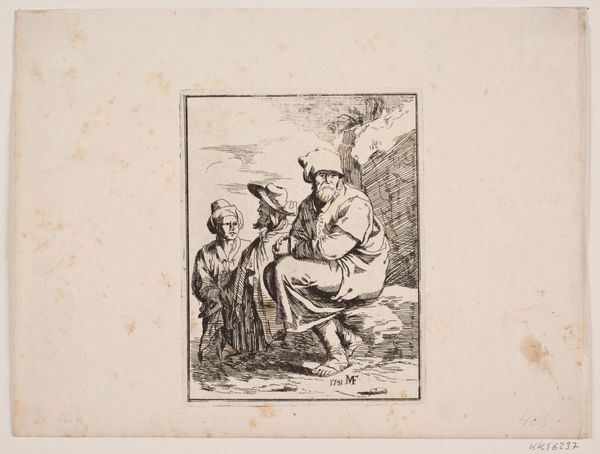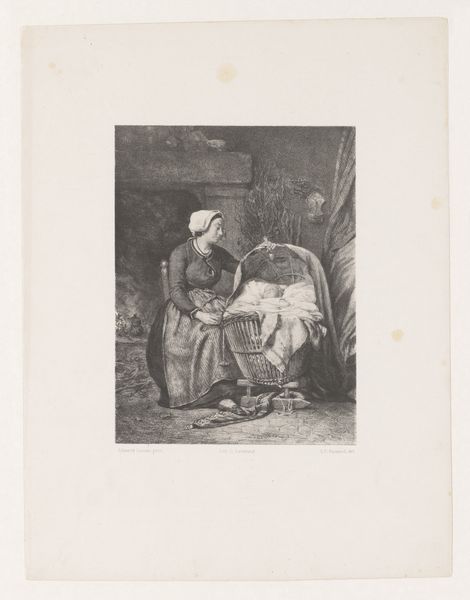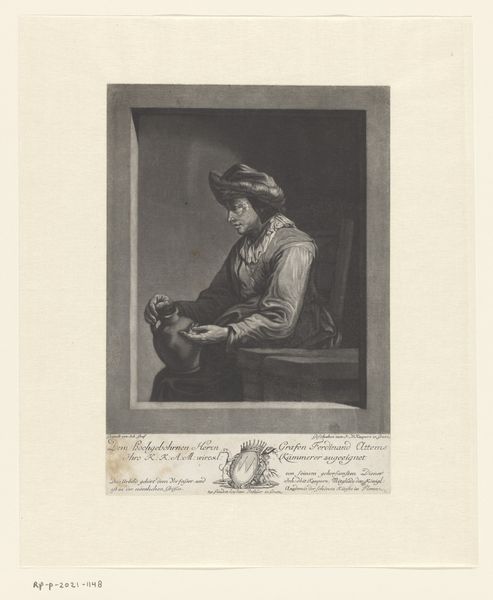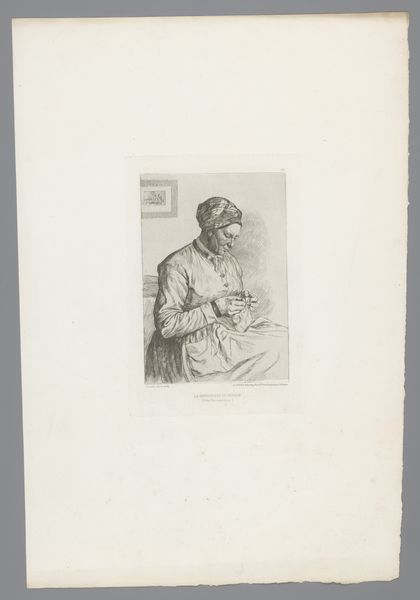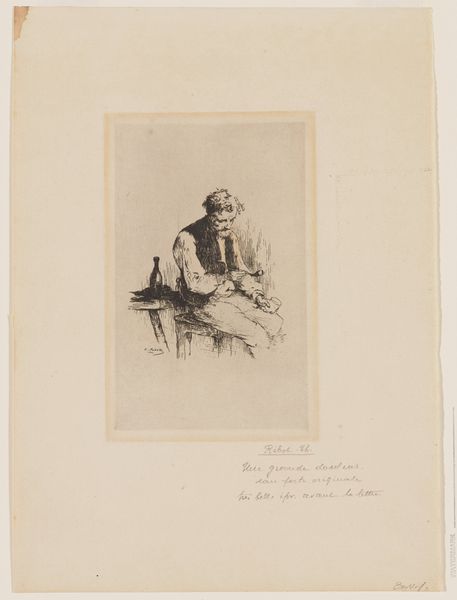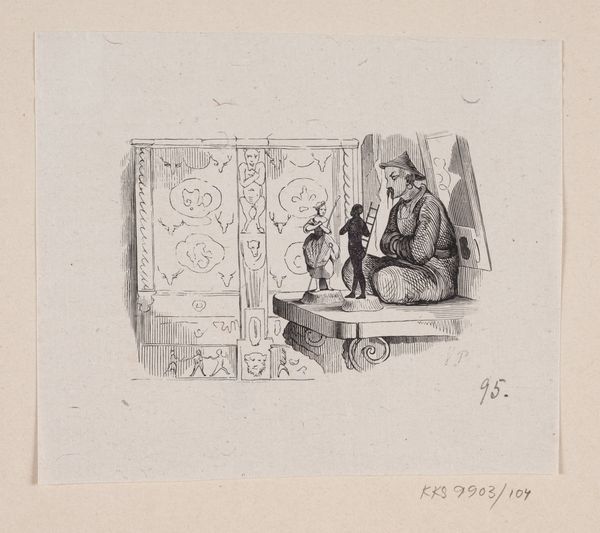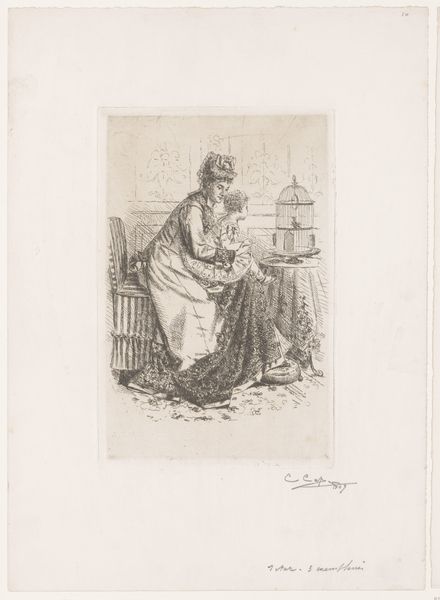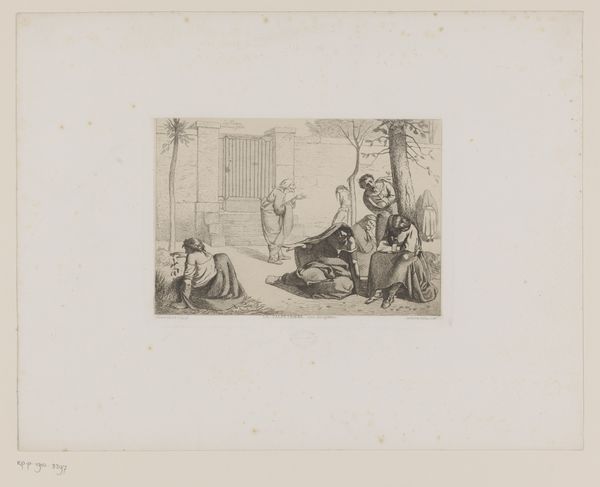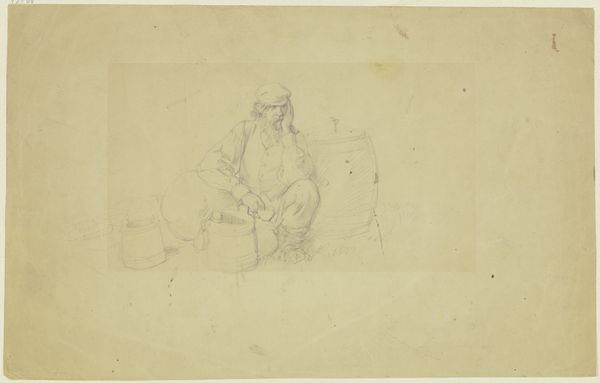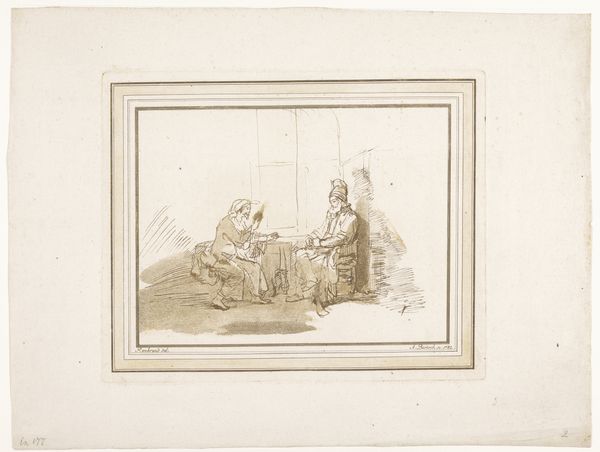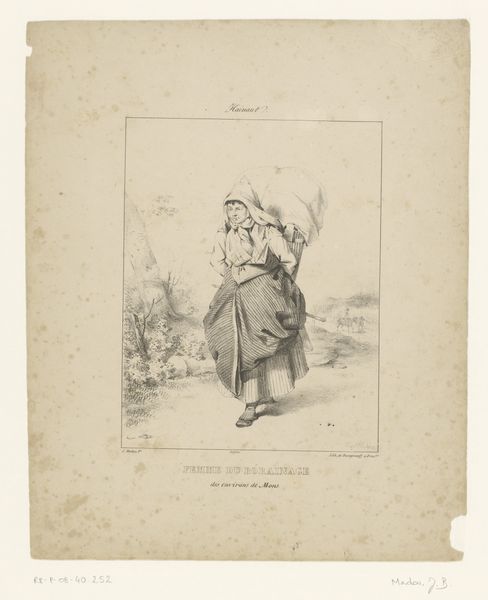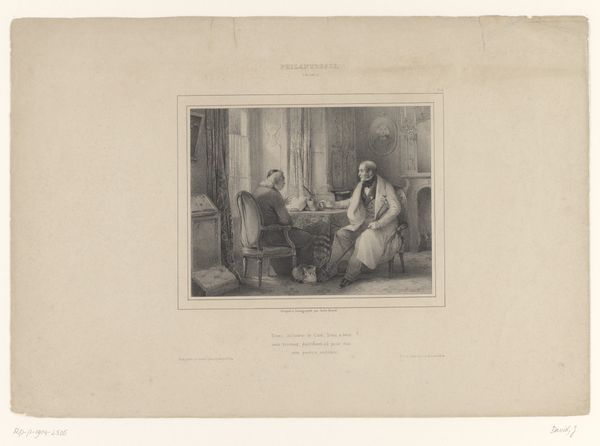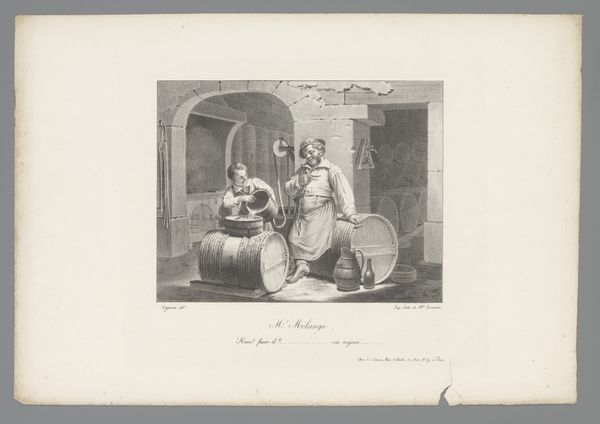
Portret van Francesco da Barberino, schrijvend aan een tafel 1620 - 1660
0:00
0:00
drawing, print, paper, engraving
#
portrait
#
drawing
#
baroque
# print
#
paper
#
engraving
Dimensions: height 200 mm, width 140 mm
Copyright: Rijks Museum: Open Domain
Curator: Sébastien Vouillemont gives us "Portret van Francesco da Barberino, schrijvend aan een tafel," sometime between 1620 and 1660. Editor: It's incredibly detailed for an engraving. I’m immediately drawn to the table. What exactly *is* that? Legs and paws—some mythical beast-table situation? I feel a bit uneasy. Curator: A mythical beast-table indeed. More broadly, you are correct. It's a stunning example of Baroque printmaking. The engraving technique, using fine lines to create shadow and form, really gives depth to the figure. And to be writing at that hour in history… I wonder if he felt any creative urgency, and that comes through. Editor: Urgency, perhaps. But the paper! The act of writing. Those would have been valued skills—so carefully taught and laboriously practiced. Did he make his own ink? What was it made of? Everything would have taken longer than we can imagine today. And that gives the portrait a monumental quality. It captures a learned man in motion. Curator: There's also a theatricality to the composition, isn't there? The way Barberino is posed, the drapery of his robes, the column and the implied landscape beyond… it all contributes to a sense of grandeur and importance. Though the stage feels tiny... a strange sort of confinement. Editor: It’s about elevating a profession—scholarship—but also elevating the materials of scholarship. The ink, the paper, even the specially-made writing table speak volumes. And now, hundreds of years later, the image, printed on paper, persists. A humble series of steps, a collaboration, a kind of immortality? Curator: Yes, definitely. The layered implications behind simple strokes! It’s a testament to how our stories live on, through our creation, as tangible and felt representations of ourselves and a hope for eternity. Editor: In a way, both the sitter and the print are shaped by what society makes important. Both subject and object are social constructions... even with the hint of the artist's own inspiration coming through. Thanks for unpacking this work.
Comments
No comments
Be the first to comment and join the conversation on the ultimate creative platform.
